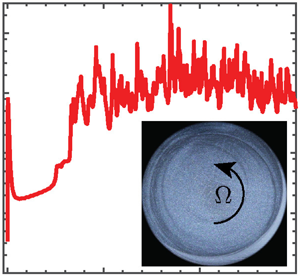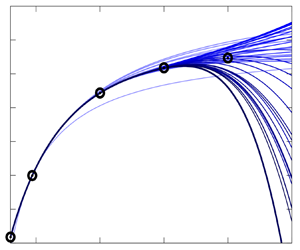Refine listing
Actions for selected content:
1416829 results in Open Access
TWO NOTES ON AURELIUS VICTOR'S LIBER DE CAESARIBVS (10.5 LAVTVSQVE AND 13.3 SATISQVE)
-
- Journal:
- The Classical Quarterly / Volume 74 / Issue 1 / May 2024
- Published online by Cambridge University Press:
- 24 April 2024, pp. 374-378
- Print publication:
- May 2024
-
- Article
- Export citation
BJN volume 131 issue 9 Cover and Back matter
-
- Journal:
- British Journal of Nutrition / Volume 131 / Issue 9 / 14 May 2024
- Published online by Cambridge University Press:
- 24 April 2024, pp. b1-b2
- Print publication:
- 14 May 2024
-
- Article
-
- You have access
- Export citation
The Impact of the Law: On Character Formation, Ethical Education, and the Communication of Values in Late Modern Pluralistic Societies. Edited by John WitteJr . and Michael Welker. Eugene: Wipf and Stock, 2022. Pp. 288. $35.00 (paper). ISBN: 9781666750621.
-
- Journal:
- Journal of Law and Religion / Volume 39 / Issue 2 / May 2024
- Published online by Cambridge University Press:
- 24 April 2024, pp. 285-287
-
- Article
- Export citation
Practitioners respond to Carol Griffiths ‘What about the teacher?’ (Language Teaching, 56(2), 210–222)
-
- Journal:
- Language Teaching / Volume 57 / Issue 4 / October 2024
- Published online by Cambridge University Press:
- 24 April 2024, pp. 588-589
- Print publication:
- October 2024
-
- Article
- Export citation
Occult neck metastasis in salvage laryngectomy: a road map for super-selective neck dissection
-
- Journal:
- The Journal of Laryngology & Otology / Volume 138 / Issue 9 / September 2024
- Published online by Cambridge University Press:
- 24 April 2024, pp. 979-982
- Print publication:
- September 2024
-
- Article
-
- You have access
- Open access
- HTML
- Export citation
Merchants’ agents and the process of bottom-up harmonization between European towns, fourteenth to sixteenth centuries
-
- Journal:
- Urban History / Volume 52 / Issue 2 / May 2025
- Published online by Cambridge University Press:
- 24 April 2024, pp. 342-357
-
- Article
-
- You have access
- Open access
- HTML
- Export citation
The Women of Viharsarok: Peasant Women's Labour Activism in 1890s Hungary
-
- Journal:
- International Review of Social History / Volume 69 / Issue 1 / April 2024
- Published online by Cambridge University Press:
- 24 April 2024, pp. 99-126
-
- Article
-
- You have access
- Open access
- HTML
- Export citation
Pension reforms in Hungary: have they gone too far?
-
- Journal:
- Journal of Pension Economics & Finance / Volume 23 / Issue 3 / July 2024
- Published online by Cambridge University Press:
- 24 April 2024, pp. 438-453
-
- Article
-
- You have access
- Open access
- HTML
- Export citation
Jordanian Nurses’ Perceptions of Disaster Preparedness and Core Competencies
-
- Journal:
- Disaster Medicine and Public Health Preparedness / Volume 18 / 2024
- Published online by Cambridge University Press:
- 24 April 2024, e96
-
- Article
-
- You have access
- Open access
- HTML
- Export citation
EUR volume 64 issue 3 Cover and Back matter
-
- Journal:
- European Journal of Sociology / Archives Européennes de Sociologie / Volume 64 / Issue 3 / December 2023
- Published online by Cambridge University Press:
- 23 April 2024, pp. b1-b9
-
- Article
-
- You have access
- Export citation
Elasto-inertial instability in torsional flows of shear-thinning viscoelastic fluids
-
- Journal:
- Journal of Fluid Mechanics / Volume 985 / 25 April 2024
- Published online by Cambridge University Press:
- 23 April 2024, A37
-
- Article
- Export citation
Earthquake in Turkey: The Triangle of Life and Disaster Kits Saves Lives
-
- Journal:
- Disaster Medicine and Public Health Preparedness / Volume 18 / 2024
- Published online by Cambridge University Press:
- 23 April 2024, e74
-
- Article
- Export citation
Global perspectives on death and immortality
-
- Journal:
- Religious Studies / Volume 60 / Issue S1 / May 2024
- Published online by Cambridge University Press:
- 23 April 2024, pp. S1-S3
- Print publication:
- May 2024
-
- Article
-
- You have access
- Open access
- HTML
- Export citation
Arbitrary-order sensitivities of the incompressible base flow and its eigenproblem
-
- Journal:
- Journal of Fluid Mechanics / Volume 985 / 25 April 2024
- Published online by Cambridge University Press:
- 23 April 2024, A32
-
- Article
- Export citation
Some Challenges for Moreau's Theory of Wrongful Discrimination
-
- Journal:
- Dialogue: Canadian Philosophical Review / Revue canadienne de philosophie / Volume 63 / Issue 1 / April 2024
- Published online by Cambridge University Press:
- 23 April 2024, pp. 21-29
-
- Article
-
- You have access
- Open access
- HTML
- Export citation
From Didactics to Disasters: Unveiling CBRNe and Counter-Terrorism Medicine Training in US Medical Schools
-
- Journal:
- Prehospital and Disaster Medicine / Volume 39 / Issue 4 / August 2024
- Published online by Cambridge University Press:
- 23 April 2024, pp. 287-290
- Print publication:
- August 2024
-
- Article
- Export citation
The culture/class broths where women’s desires and tastes are marinated - Katherine Appleford, Classifying Fashion, Fashioning Class. Making Sense of Women’s Practices, Perceptions and Tastes, Routledge, London & New York, 2021.
-
- Journal:
- European Journal of Sociology / Archives Européennes de Sociologie / Volume 64 / Issue 3 / December 2023
- Published online by Cambridge University Press:
- 23 April 2024, pp. 439-446
-
- Article
- Export citation
Multiple Consciousness and Philosophical Method
-
- Journal:
- Dialogue: Canadian Philosophical Review / Revue canadienne de philosophie / Volume 63 / Issue 1 / April 2024
- Published online by Cambridge University Press:
- 23 April 2024, pp. 59-73
-
- Article
-
- You have access
- Open access
- HTML
- Export citation
The Oedipal dynamic of ‘The Sorcerer's Apprentice’ (from Fantasia, 1940) – Psychiatry in film
-
- Journal:
- The British Journal of Psychiatry / Volume 224 / Issue 5 / May 2024
- Published online by Cambridge University Press:
- 23 April 2024, p. 149
- Print publication:
- May 2024
-
- Article
-
- You have access
- HTML
- Export citation
BJP volume 224 issue 5 Cover and Back matter
-
- Journal:
- The British Journal of Psychiatry / Volume 224 / Issue 5 / May 2024
- Published online by Cambridge University Press:
- 23 April 2024, p. b1
- Print publication:
- May 2024
-
- Article
-
- You have access
- Export citation











